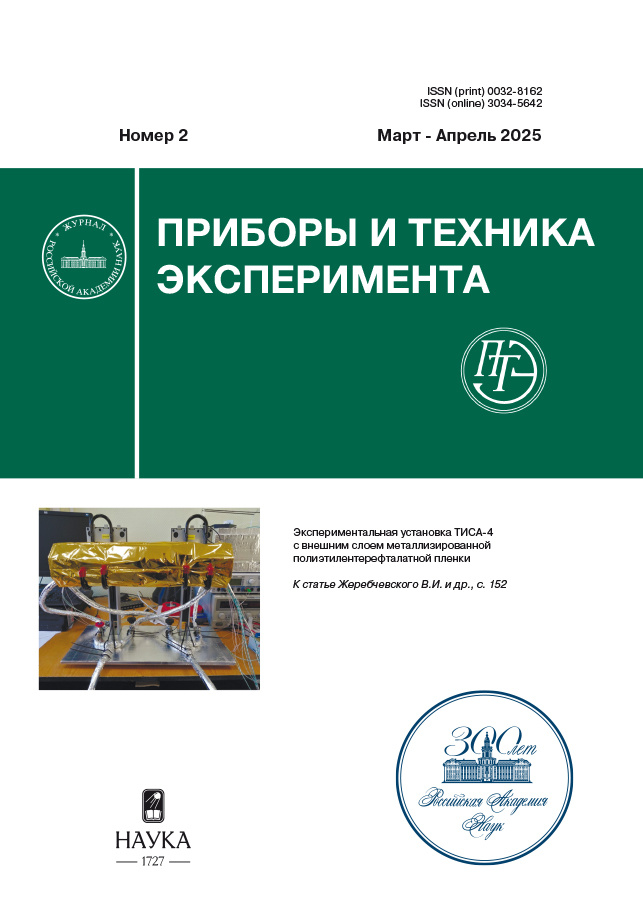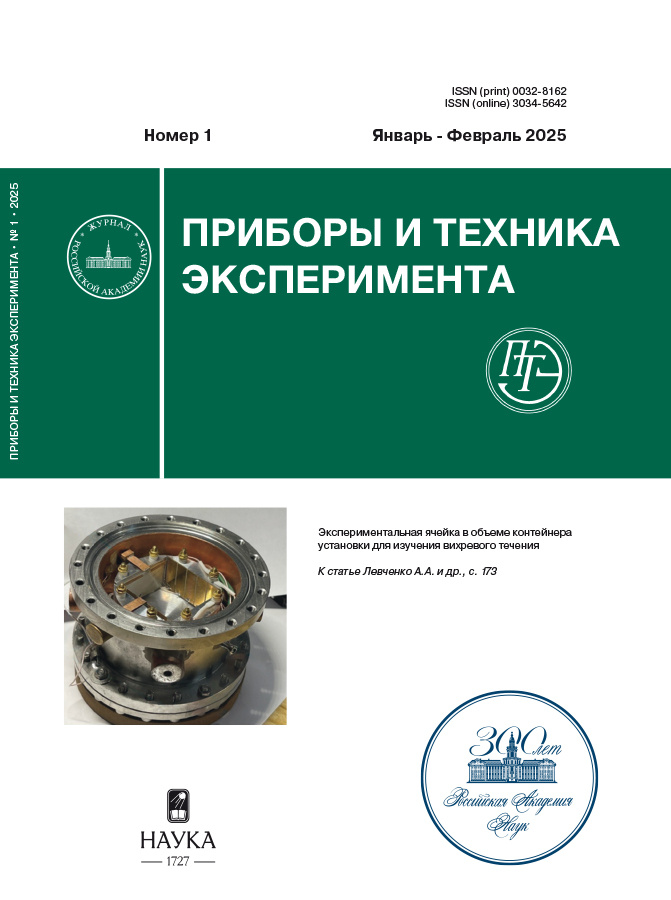Экспериментальный стенд для зондирования плазмы высоковольтного разрядника с лазерным управлением
- Авторы: Липчак А.И.1, Волков Н.Б.1, Журавлев И.А.2
-
Учреждения:
- Институт электрофизики Уральского отделения Российской академии наук
- Институт электрофизики Уральского отделения Российской академии наук Россия
- Выпуск: № 1 (2025)
- Страницы: 33-39
- Раздел: ОБЩАЯ ЭКСПЕРИМЕНТАЛЬНАЯ ТЕХНИКА
- URL: https://jdigitaldiagnostics.com/0032-8162/article/view/689721
- DOI: https://doi.org/10.31857/S0032816225010054
- EDN: https://elibrary.ru/GGORCS
- ID: 689721
Цитировать
Полный текст
Аннотация
Представлены методика и реализующая ее установка для оптического зондирования импульсной плазмы, инициируемой излучением YAG:Nd3+-лазера в высоковольтном газовом коммутаторе с лазерным управлением, который может использоваться в качестве первичного ключа сильноточного высоковольтного импульсного электронного ускорителя-генератора типа РАДАН. Исследования проводились в естественной атмосфере. Приводятся первые результаты измерений динамики коэффициента поглощения лазерного излучения в плазме, полученной на данной установке. Эти данные свидетельствуют о реализации условий нелинейного поглощения излучения лазера плазмой при плотностях энергии возбуждения более 240 Дж/см2, они позволят выработать рекомендации по выбору параметров запуска разрядника с целью минимизации нестабильности его включения.
Полный текст
Об авторах
А. И. Липчак
Институт электрофизики Уральского отделения Российской академии наук
Автор, ответственный за переписку.
Email: lipchak@iep.uran.ru
Россия, 620016, Екатеринбург, ул. Амундсена, 106
Н. Б. Волков
Институт электрофизики Уральского отделения Российской академии наук
Email: lipchak@iep.uran.ru
Россия, 620016, Екатеринбург, ул. Амундсена, 106
И. А. Журавлев
Институт электрофизики Уральского отделения Российской академии наук Россия
Email: lipchak@iep.uran.ru
Россия, 620016, Екатеринбург, ул. Амундсена, 106
Список литературы
- Pendleton W.K., Guenther A.H. // Rev. Sci. Instrum. 1965. V. 36. P. 1546. https://doi.org/10.1063/1.1719388
- Alcock A.J., Richardson M.C., Leopold K. // Rev. Sci. Instrum. 1970. V. 41. P. 1028. https://doi.org/10.1063/1.1684689
- Rosenthal E., Larkin I., Goffin A., Produit T., Schroeder M., Wolf J., Milchberg H. // Opt. Express. 2020. V. 28. P. 24599. https://doi.org/10.1364/OE.398836
- Dehne K., Higginson A., Wang Y., Tomasel F., Capeluto M., Shlyaptsev V., Rocca J. // Opt. Express. 2024. V. 32. P. 16164. https://doi.org/10.1364/OE.506547
- Zhou W.D., Guo Y.H., Zhang R.R. // Front Phys. 2020. V. 15. P. 52201. https://doi.org/10.1007/s11467-020-0969-1
- Shangguan S., Zhang J., Li Z., Shi W., Wang W., Qi D., Zheng H. // Sci. China Technol. Sci. 2024. V. 67. P. 73. https://doi.org/10.1007/s11431-023-2499-0
- Липчак А.И., Барахвостов С.И. // ПТЭ. 2021. № 3. С. 40. https://doi.org/10.31857/S0032816221030216
- Месяц Г.А., Яландин М.И. // УФН. 2005. Т. 175. № 3. С. 225.
- Michel P. Fundamentals of Optics and Plasma Physics, Introduction to Laser-Plasma Interactions. Graduate Texts in Physics. Cham: Springer, 2023. https://doi.org/10.1007/978-3-031-23424-8_1
- Paschotta R. Field Guide to Laser Pulse Generation. Bellingham, WA.: SPIE Press, 2008. https://doi.org/10.1117/3.800629
- Rand D., Hybl J., Fan T.Y. Cryogenic lasers, Handbook of Solid-State Lasers. Cambridge: Woodhead Publ., 2013. https://doi.org/10.1533/9780857097507.2.525
- Koike Y., Koike K. // Polymer Science: A Comprehensive Reference. 2012. V. 8. P. 283. https://doi.org/10.1016/B978-0-444-53349-4.00209-0
- ГОСТ Р 8.736-2011. Государственная система обеспечения единства измерений. Измерения прямые многократные. Методы обработки результатов измерений. Основные положения. М.: Стандартинформ, 2013.
- Lipchak A.I., Volkov N.B., Turmyshev I.S., Chingina E.A. // Bulletin of the Russian Academy of Sciences Physics. 2024. V. 87. (Suppl 2). P. S222. https://doi.org/10.1134/S1062873823704646
- Генералов Н.А., Козлов Г.И., Райзер Ю.П. // ПМТФ. 1970. № 3. C. 27.
- Прохоров А.М., Конов В.И., Урсу И., Михэилеску И.Н. Взаимодействие лазерного излучения с металлами. М.: Наука, 1988.
- Wey T.A., Ogborn L.L. // ECE Technical Reports. 1995. № 12. P. 169. http://docs.lib.purdue.edu/ecetr/169
- Volkov N.B., Lipchak A.I. // Condensed Matter. 2022. V. 7 (4). P. 61. https://doi.org/10.3390/condmat7040061
- Volkov N.B., Lipchak A.I. // Condensed Matter. 2023 V. 8 (3). P. 70. https://doi.org/10.3390/condmat8030070
Дополнительные файлы





















